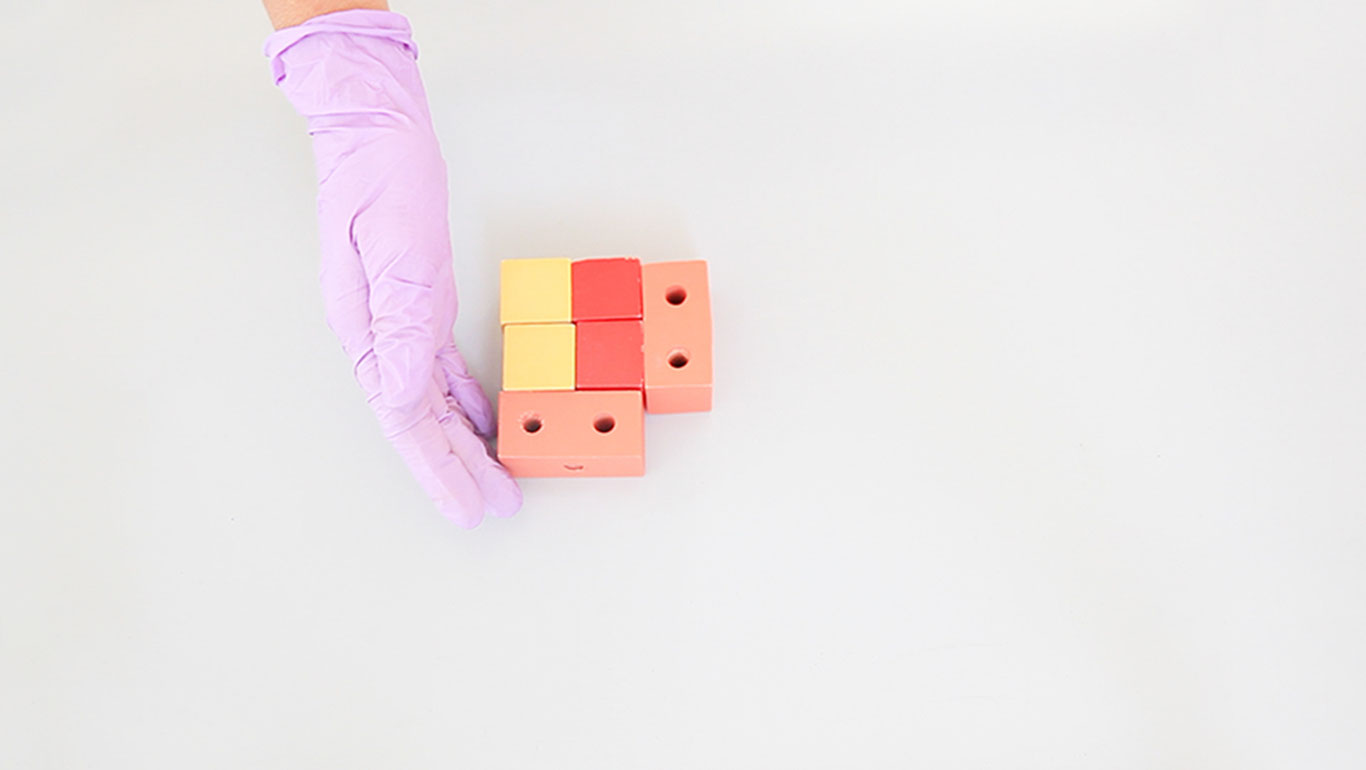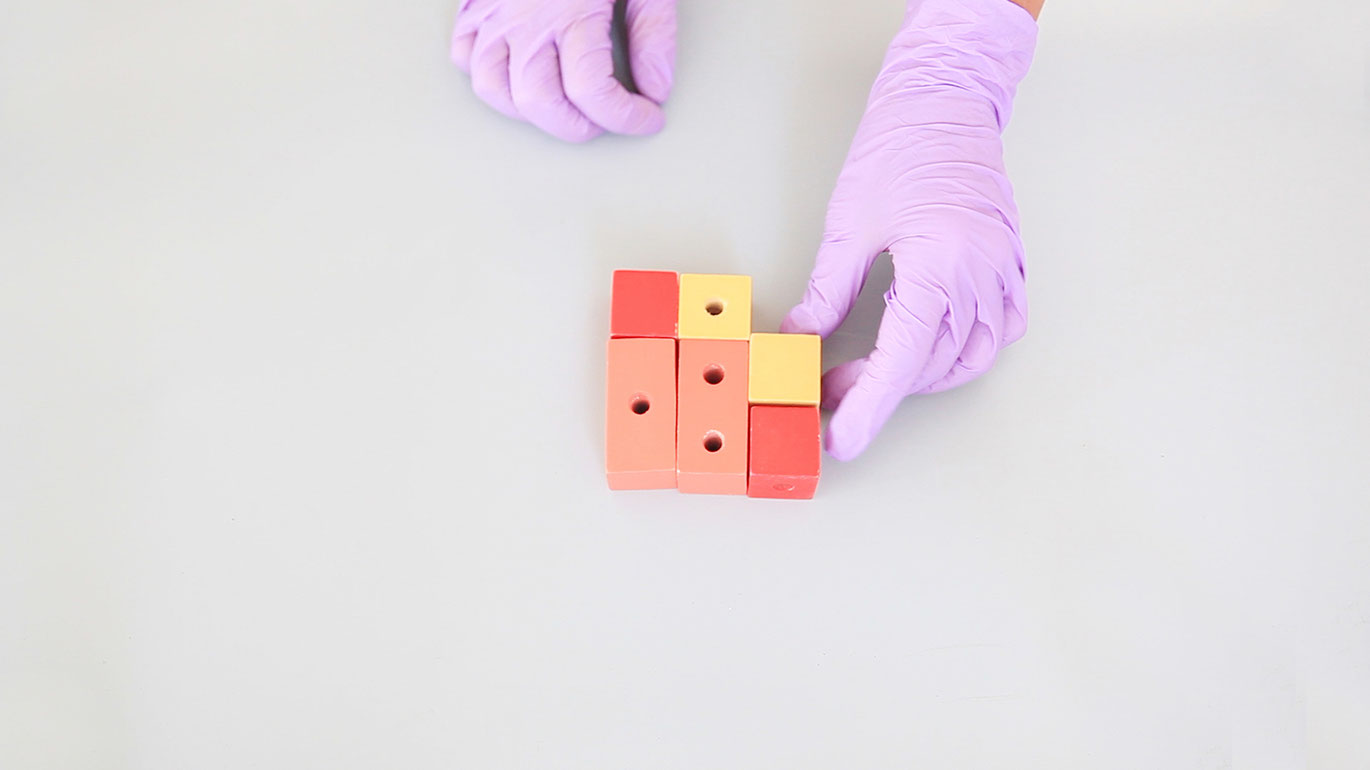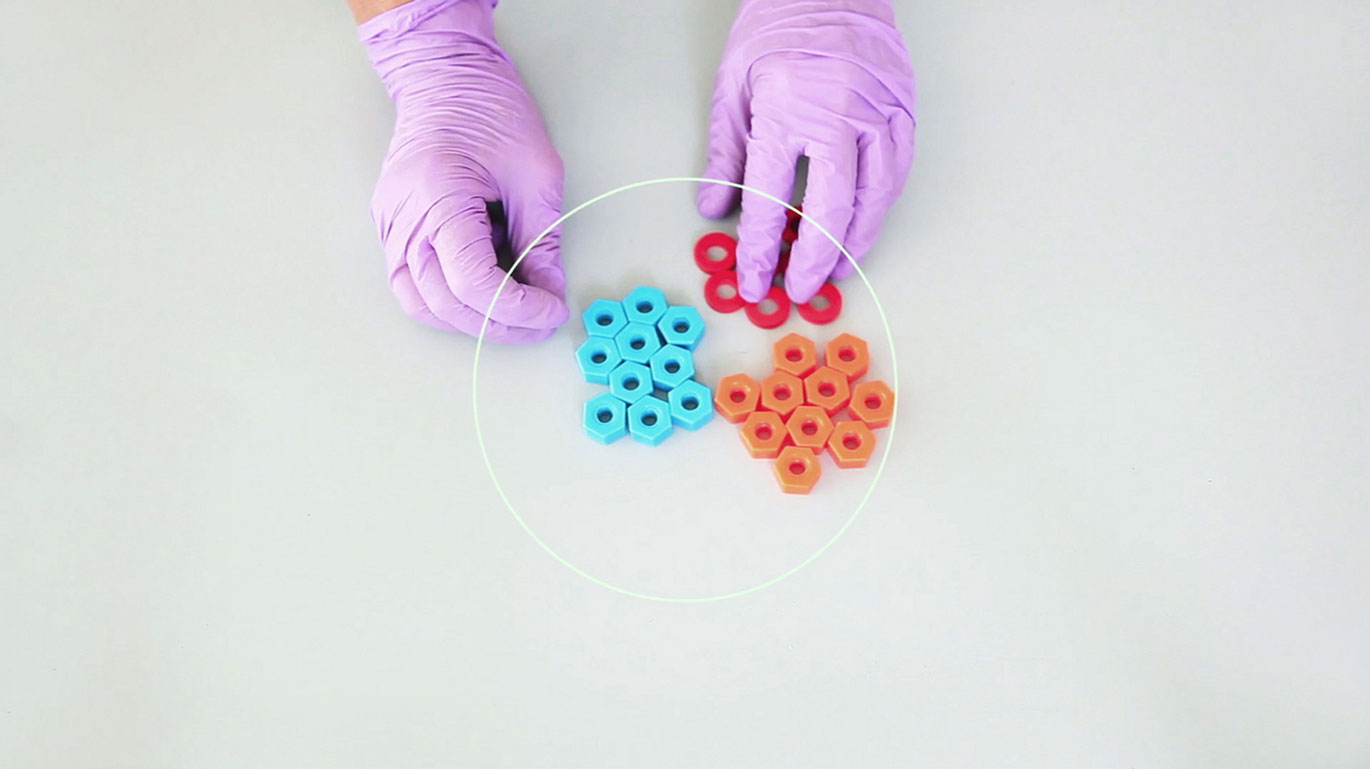zwischen mir und der welt / aufräumen
The playful impression disappears quickly. The wooden blocks are, indeed, luminous and colourful as bonbons, but the hands that constantly rearrange the objects for the camera are in rubber gloves. The incessant piling and arranging, twisting, turning, and moving is reminiscent of a restless search for the “right” constellation.
“But what is normal, anyway?” asks the voice superimposed over this arranging in zwischen mir und der welt / aufräumen. In the film, Michaela Schwentner gives people who have been diagnosed as being on the autism spectrum, more specifically, with Asperger syndrome, the chance to speak. They offer profound reflections on what isolates them from the so-called world out there, how their social handicap and the difficulties in communicating with others lead them to experience the disturbance as a prison. The limitations as well as the compulsion are reflected and intensified at the visual level: the organizing of the geometric structures becomes a Sisyphean struggle; it is a symbol of the inability to grasp the structure of a social situation.
In the work-in-progress performance Assembly, begun in 2019, Michaela Schwentner also uses the re-arranging of things to analyze social structures. While chairs and stools at different sites of social life define the relationships of people to one another, their configuring and reconfiguring are meant to make visible underlying patterns. zwischen mir und der welt / aufräumen also goes beyond the mere documentary element. When those affected by being stigmatized as “unnatural” or lacking empathy talk about hiding their “difference” and about Hans Asperger’s involvement in the eugenics of the Nazis at Spiegelgrund in Vienna, a flash of defiance emerges again and again, which casts doubt on the normalcy of dominant social systems. (Anne Katrin Feßler)
Translation: Lisa Rosenblatt
zwischen mir und der welt / aufräumen
2019
Austria
24 min
Documentary, Experimental
German
English



